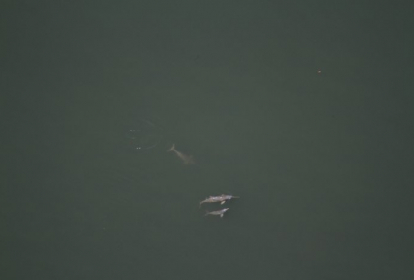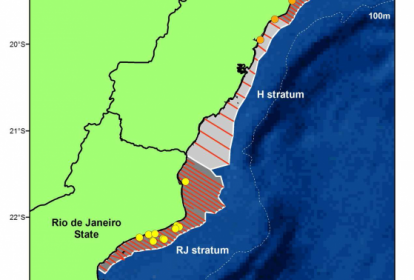Principal Investigator: Daniel Danilewicz, Instituto Aqualie
Funding year: 2011
Main objectives:
- Generate the first estimate of abundance for franciscanas in management area 'FMA I'.
- Provide a baseline with which to evaluate the long-term viability of this isolated franciscana population.
- Provide information on population distribution and its relationships with environmental variables, including revealing critical habitat(s).
Main outcomes:
- Design-based aerial surveys were conducted in 2011 and 2012 to assess the distribution and to estimate abundance of franciscanas in FMA I, including an area believed to represent a hiatus in the species' distribution.
- A total of 20 franciscana groups (46 individuals) were recorded, including within the proposed hiatus. Average group size was 2.2 (SE=0.305). Estimated abundance corrected for perception and availability bias was some 2,000 individuals (CV=0.48, 95% CI: 796-5,013).
- Franciscanas were recorded from very coastal and turbid waters near the shore (just behind the surf zone) to clearer waters as far as 13km from the shore (water depth=19m).
- There is evidence of differential distribution patterns in the northern and southern portions of the survey area. Franciscanas were seen only in the northern portion of the presumed hiatus suggesting its latitudinal range needs revision, but confirming that the distribution appears to be discontinuous within FMA I.
- The most recent (2001-02) estimate of incidental mortality in FMA I (Di Beneditto, 2003) corresponds to 5.5% of the population size estimated during this study, indicating a possible high and unsustainable bycatch if current mortality is similar.
- Results indicate that FMA I is likely the smallest franciscana population and additional research and management is required.
Reports/Papers:
Danilewicz, D. 2012. Estimating Abundance of an Isolated Population of the Threatened Franciscana: Moving Towards Conservation Actions. A research project funded by the International Whaling Commission through the Small Cetacean Conservation Fund. Final Report, September 2012. 16 pp. Click here to link.



